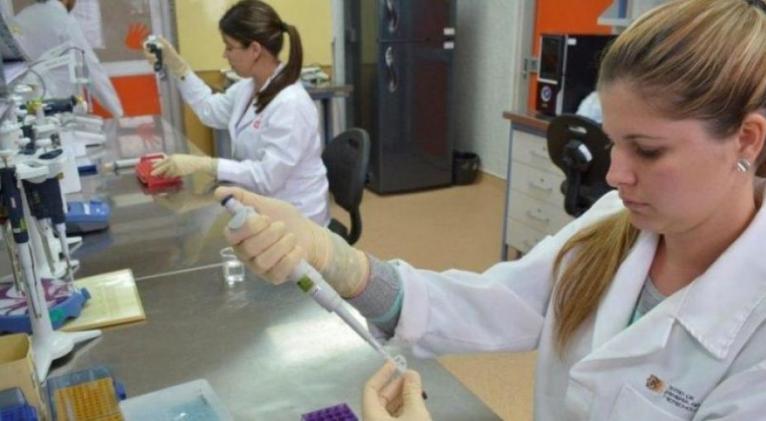Cuban medicine would save thousands of diabetic feet in U.S.

Cuban drug Heberprot-P awaits the US Food and Drug Administration (FDA) approval, amidst storming scenario with Donald Trump in office.
While the amputation rates of people suffering diabetic foot surpass 20 percent in the most developed countries, Cuba claims to have put an end to this serious health problem with the use of Heberprot-P, a medication that might be used in thousands of patients in U.S. and Puerto Rico, but its entry into US market is frozen in the maelstrom caused by the change in command in the White House.
Heberprot-P is an injectable product used in diabetic foot ulcers, many of which, estimated by Cuban scientists up to 80,000 annually, finish in amputation in the United States.
Cuba claims it has reduced amputation risk by 80 percent in foot ulcers in the country, statistics that according to Cuban experts could be achieved in U.S. too, should Heberprot-P gets FDA authorization for use.
Thanks to the new stage in the relations between both countries achieved by Presidents Barack Obama and Raúl Castro Ruz, this Cuban drug obtained a permit to begin FDA approval process, but the change of command in the White House has caused troubles to find a partner in U.S. who dares to finance the costly clinical experimentation trial demanded by US authorities.
"At this moment, the issue of the clinical assessment in the United States is a sensitive subject because of the change of administration. This brings new rules with it, causes a domino effect and slows everything down. It can be said there’s a period of uncertainty”, said to El Nuevo Día Dr. Manuel Raíces Pérez-Castañeda, head of the Department of Strategic Products and Government Programs of Heber Biotec S.A., Cuban pharmaceutical company attached to the Center for Genetic Engineering and Biotechnology of Cuba.
"Without a doubt, the medical registration of this drug in the United States will bring a very large social impact, because this disease affects 29.3 million inhabitants, which generates one million ulcers a year, and 200,000 out of them need more complex hospital care, in a country where between 73,000 and 80,000 legs are amputated due to diabetic foot ulcers”, the renowned Cuban scientist added.
Cuban estimates report that amputations on US soil could be lowered from 73,000 to 21,000 in a year.
The impact on poor or minority communities would be much larger, because rates of diabetics in those population sectors are much higher.
"All this has an impact on the social security system in U.S., because an amputated person is a person who no longer works, who depends on the social insurance”, he added.
The success of Heberprot-P, claims the Cuban State, is based on the fact that rather than a drug, it is about a program that focuses on the identification of cases.
It’s a public health model that, according to official figures, has 382 units with therapy available throughout the country.
The secret, they assure, has been an intensive education program for doctors, who, once a diabetes case is diagnosed, monitor the patients’ feet in their consultations aimed at detecting ulcers in their stages 1 or 2, so treatment with Heberprot-P is administered ambulatorily three times a week.
"If we were to send those who need therapy to hospital, costs would rise. Then we created some outpatient care units, which are called policlinics here, thus we can assist stage 1-2 outpatient patients”, claimed Raíces Pérez-Castañeda, who notices that everything was not all roses.
The early resistance of the physicians and the mistrust toward a model that was changing the routine of health professionals harmed. But once the patients began to see the benefits and, especially, surgeons turned from “amputators” to “healers”, things changed.
There are also the typical shortcomings of the health system of a third-world country, above all, in the face of the problems created by the economic blockade or embargo of U.S., which conditions the fluctuation of biomedical products, and the inefficiencies of the health structure itself.
"This is an example of the thesis of the Cuban health model that is not a perfect system, but it is a health system that functions and reaches the population. Cubans cannot tell anybody to use this model, but we can say: 'See what I’ve done, learn from my mistakes and hopefully what I’ve done may be useful to you”, Raíces Pérez-Castañeda stated.
Awaiting for Trump
In U.S. FDA approval process is stopped, awaiting President Donald Trump’s decision and his policy toward Cuba, the investment to achieve the approval for its use is estimated in $170 millions, amount of money that Cuban authorities cannot afford, therefore they are waiting for a partner.
As the scene in the political relations between Cuba and U.S. gets cleared and the search for a partner strengthens, the only choice for those who want to use this drug is to travel to Cuban hospitals, something that is happening at present.
It’s estimated that hundreds of Americans are coming to Cuba to be treated, not only with Heberprot-P, but also with a lung cancer vaccine that is already in its clinical experimentation trial in the United States, or treatment against vitiligo.
Cuba’s health system is free for Cubans, but foreigners must pay through specialized clinics for those aims, such as “Cira Garcia” Hospital or the International Center for Neurological Restoration (CIREN).
Cuban authorities bet that the medical tourism flow generates some pressure in U.S. and that Trump, who is supposed to make an announcement this month about his policy toward Cuba, takes into account the benefits it represents for the health of US citizens.
Edited by Cubasi
Translated by Jorge Mesa Benjamin / Cubasi Translation Staff













Add new comment